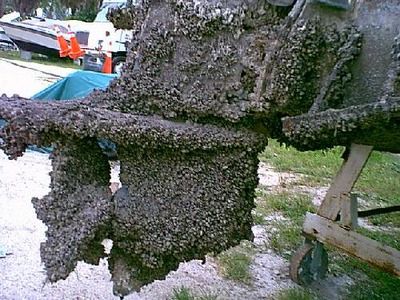Larryrsf
Member
Today I took my boat out for a short spin. It was idling too slowly and died when I was maneuvering back into the marina slip. Thankfully, someone helped me avoid drifting into other boats, mostly sailboats so long that they extended out into the channel.
Once safely in my slip, I removed the cowling and adjusted the idle faster. As this old engine accumulates hours after that 14 year sleep, things are changing as the carbs clean themselves with that fuel additive.
But I noticed a persistent drip of water from the bottom port side carb air intake. None other, just that one. I put my fingers into the stream and smelled it to ensure that it isn't gas. It is just warm water.
In a car engine, when radiator water mixes with the oil or gets into the cylinders, it means a blown head gasket. Same here?
I hesitate to believe that because it is definitely NOT running on 5 cylinders. It idles well and can turn 5000 RPM at full throttle, the boat hits 45MPH or more.
What does that water mean?
Larry
Once safely in my slip, I removed the cowling and adjusted the idle faster. As this old engine accumulates hours after that 14 year sleep, things are changing as the carbs clean themselves with that fuel additive.
But I noticed a persistent drip of water from the bottom port side carb air intake. None other, just that one. I put my fingers into the stream and smelled it to ensure that it isn't gas. It is just warm water.
In a car engine, when radiator water mixes with the oil or gets into the cylinders, it means a blown head gasket. Same here?
I hesitate to believe that because it is definitely NOT running on 5 cylinders. It idles well and can turn 5000 RPM at full throttle, the boat hits 45MPH or more.
What does that water mean?
Larry

